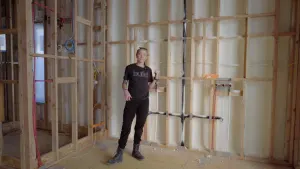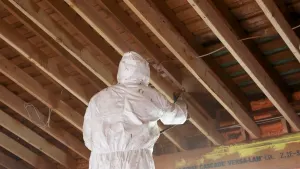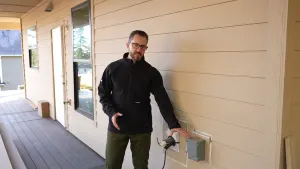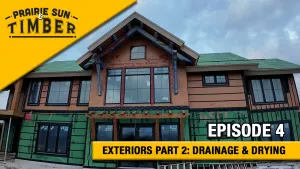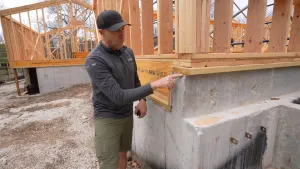Weather barriers, particularly in terms of air-sealing, are gaining traction with builders. The headlines confirm that we no longer know what the weather has in store for us. And, while we’re used to protecting our homes from incoming moisture by air-sealing windows, where else should we incorporate air-sealing? The answer is around door headers and sills, inside the bottom plate, and finally, virtually anywhere you can see light entering (when it shouldn't). The solution—PROSOCO R-Guard AirDam.
What is AirDam?
PROSOCO R-Guard AirDam creates an extremely durable and weather-tight seal to prevent moist outside air from entering and conditioned indoor air from escaping. Wind-driven rain and condensed water are diverted to a flashing membrane and water-resistive barrier rather than entering the home.

According to Matt Risinger, CEO, Risinger Build, “AirDam is such a cool product. It’s very singularly focused rather than claiming it can do everything but it’s expert at exactly what it provides—it’s a major factor in weather barriers. AirDam’s benefits include its sausage-based packaging that provides a lot of product so that I’m not trading out canisters and causing more site waste. I first used the AirDam on windows, sealing between rough openings that already had R-Guard products on it and the frame of the window—and I was immediately hooked. It bonds tenaciously and can be used on various materials including vinyl, wood, metal and even painted metal.”
In addition to windows, there’s a litany of places AirDam can be used for sealing, including:
Door Jamb and Sills
Doors should be detailed the same way that you detail windows. Air seal the rough opening around the door with foam backer rod, non-expanding spray foam, and/or caulk. Unsealed openings or crevasses will allow moisture to migrate into your structure, creating an environment for mold growth and causing a lot of damage. Door gaskets are used to seal gaps at door perimeters, including jambs and headers. Sealing gaps along the door frame significantly reduces or eliminates sound, light, drafts, moisture, fire, and smoke infiltration. AirDam cures quickly to produce a durable, high-performance, high-movement elastomeric sealant. Flash around the exterior of the door frame with adhesive or liquid-applied waterproof flashing. Install a tight-fitting door sweep along the bottom of the door.
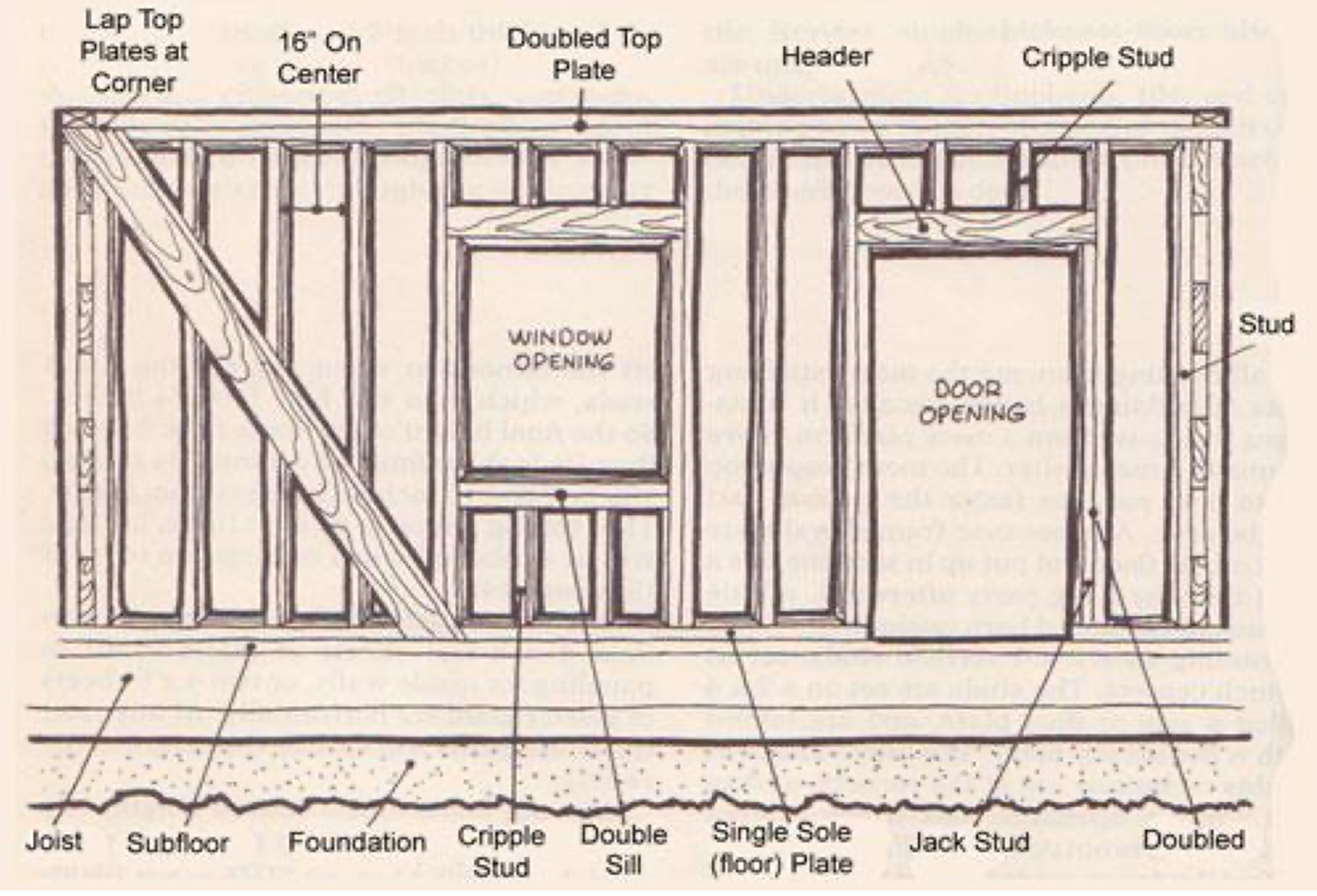
Figure 1 Within the interior, there are many places appropriate for AirDam. Here, in addition to a window opening, we see the door framing where AirDam can be used and the single sole plate—aka bottom plate. Source: BBRSD.org
Bottom (or Sole) Plates
Bottom plates are horizontal members of the wall connected by studs and are also known as sole plates. They are an extension of the foundation upon which a roof, ceiling, and walls rest. Typically, wood and other materials include steel, concrete, or composites. The bottom plate is affixed to a subfloor. With interior walls, vertical studs are placed and nailed or screwed down through the subfloor and bottom plate (See Figure 1).
Using AirDam on the bottom or sole plates is a great deterrent, not just to prevent indoor air from escaping and outdoor air and pollen from coming in but also bugs from coming into the home.
We've discussed windows, doors, and bottom plates. What's left? Potentially everywhere else….
Do You See the Light, Feel a Breeze, or a Sneeze?
We've all experienced it. We're in a home's interior on a sunny day, and we notice that we can see that sunshine—and we're not supposed to. When this happens, take care of that opening immediately, however small. Seal it with AirDam. Here are some other situations where we need to find the source of the breach:
- Moisture and bugs are finding their way in
- Allergens and pollen are causing discomfort with the home’s residents
- There’s a slight (or not so slight) draft
AirDam is solvent-free, Isocyanate-free, and complies with all AIM VOC regulations, so you know that your work to keep allergens out with AirDam is not going to be reversed by problems with the product’s ingredients.
Application and Maintenance
AirDam bonds to most building materials. This is an important feature since there are a lot of sealants on the market that will stick fine to wood, fiberglass, and vinyl, especially when primed, but not other products, including metals, concrete, and drywall. AirDam is unique in that it can bond to these materials without priming.
AirDam, made of Silyl-Terminated-Polymers (STP), is easy to gun and tool in all weather conditions. It's immediately waterproof and can be applied in unfavorable weather conditions and used on dry or damp substrates. This eliminates weather-related construction delays and trying to accelerate "drying in" with new construction.
AirDam cures quickly, yielding a durable, high-performance, high-movement elastomeric sealant, and it's easily applied with standard caulking tools. There's no shrinkage, staining, or yellowing. The single component-based sealant requires no mixing and is easy to gun and tool, no matter the weather.
Most sealants are housed in 10.1-ounce cartridge-sized tubes, so builders are trading out tubes rapidly, and waste is mounting up. AirDam is available in a 20-ounce sausage pack. There's little waste—when the package is done, it's tiny, so it takes a small amount of dumpster space. Eliminate waste, keep worker productivity high, and there's not a lot to lug to the dumpster when finished.
For an existing home or building, air leakage and energy loss should be continually reevaluated. However, especially when used for the interior applications discussed, AirDam should last for many decades.
A Word About Cost
When we look at the cost of a product like AirDam, we're calculating much more than what we paid. It can substantially reduce heating and cooling costs. The EPA, for example, estimates that homeowners can save an average of 15% on heating and cooling costs by air-sealing and insulating. Weatherproofing, including air sealing, minimizes unnecessary energy consumption, no matter how mild or harsh the climate. And its use translates to improved health and comfort for the home's occupants.
"AirDam will be more expensive than painter's caulk, but they're not in the same league. Although many builders still use everyday caulk, it just doesn't work very well or for very long," added Risinger.""From what I've seen, used in interior applications where UV rays are not on it constantly, AirDam will likely last the life of the building. It looks to me like it's going to be in place for many decades," he added.
AirDam has several potential applications, and builders are beginning to take notice. Try it in a few applications – and then get creative.

 Share on facebook
Share on facebook Tweet
Tweet Email
Email Share on Linkedin
Share on Linkedin


